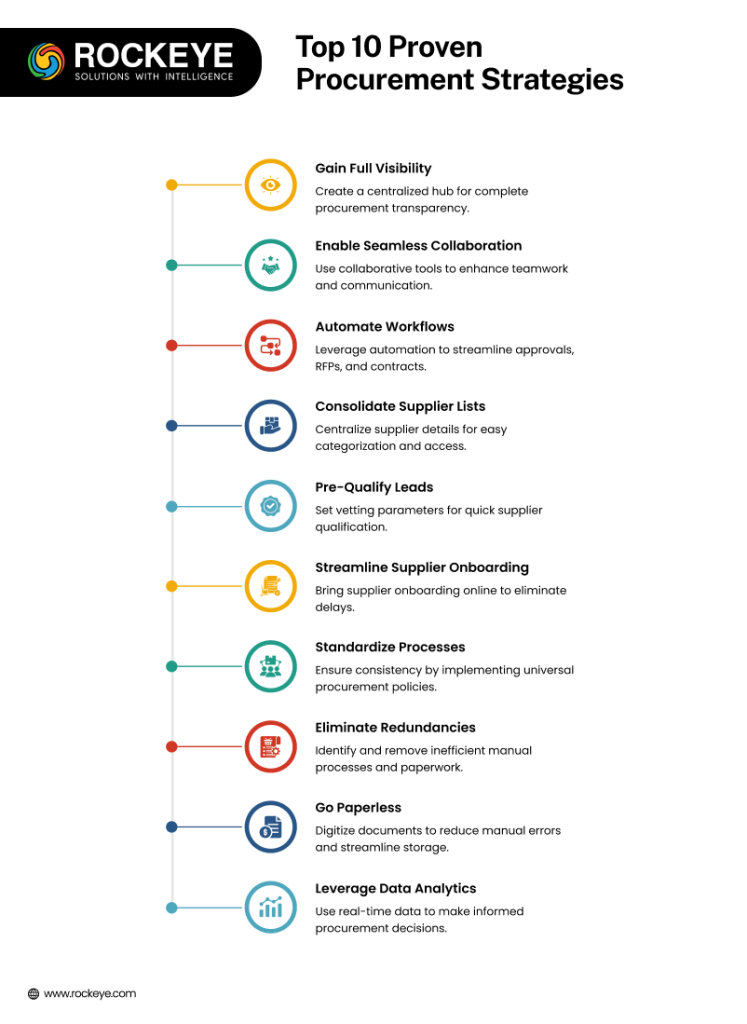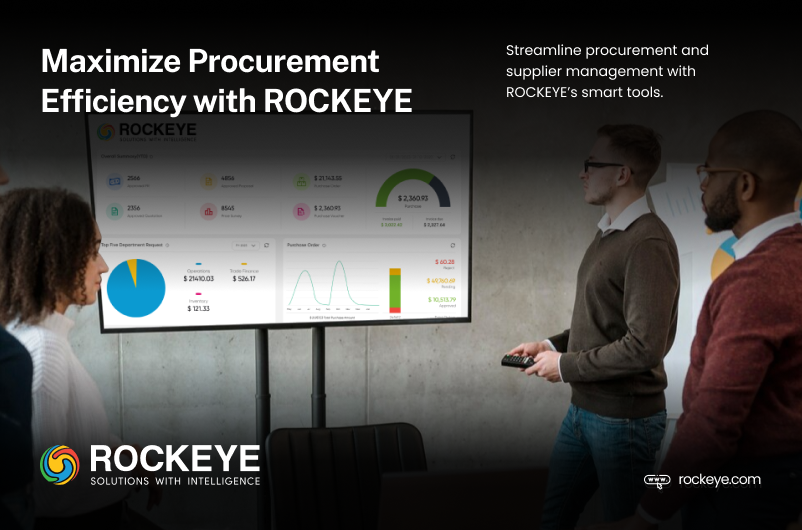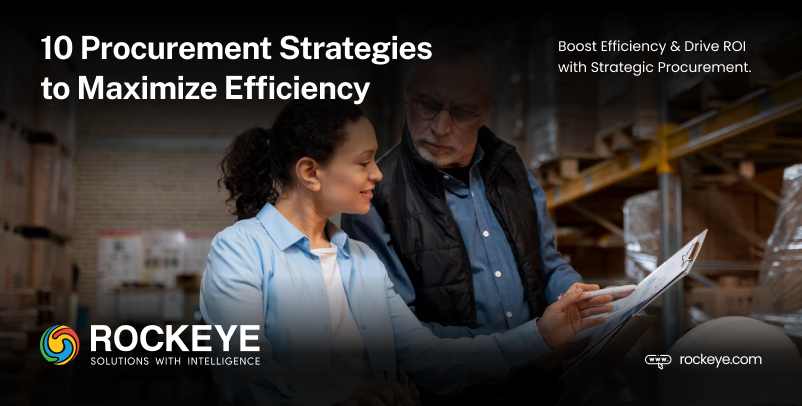Procurement is the unsung hero of your business – and the untapped opportunity for boosting your ROI. It may not be the most glamorous side of your organization, but without it, you won’t have the goods and services needed to operate as desired.
There are two ways to view the hundreds, or even thousands, of moving parts across the procurement lifecycle – as hundreds of potential headaches, or hundreds of potential opportunities.
Getting strategic about your procurement won’t just improve efficiency for your procurement team, it’ll flow onto your entire organization, offering up more time, energy and money to invest in value-adding projects.
Our top 10 proven effective procurement strategies
Procurement can be a tangled web of disparate moving parts – here are 10 ways to detangle the web and make procurement work for you.

1. Gain full visibility over your procurement pipeline
With so many moving parts, the procurement process can easily become fragmented – and that fragmentation can be a huge drain on efficiency. By creating a centralized procurement hub where you can view procurement activities by department, status, staff members and procurement type, you can gain visibility over the entire procurement process. This visibility means greater transparency – and accountability – across the entire procurement lifecycle and vastly reduces the chance of time-consuming and costly delays.
2. Enable seamless collaboration
One of the biggest roadblocks to efficient procurement is collaboration. Waiting for feedback from another stakeholder, needing approvals from a co-worker or losing track of which is the most up-to-date version of a document. The easiest way to enable collaboration is through purpose-built collaborative coworking software which allows both internal and external stakeholders to access, view, and edit documents, records and communications with ultra-clear visibility.
3. Automate procurement and sourcing workflows
Identify any procurement tasks which can be automated by procurement software, such as RFP, contract awarding and approvals. Ditch the endless email chains and create an automatic workflow that prompts stakeholders to take action as needed – no more missed deadlines or important information getting buried deep in email threads! Automation not only reduces the chance of data loss and double-handling, it also frees up more headspace for big-picture thinking and valuable strategising.
4. Consolidate and categorize your supplier lists
Keeping track of your suppliers, their capabilities and their contact details in a centralized hub is invaluable in streamlining your procurement. Create a centralized hub for your suppliers which can be accessed by your entire procurement team. Spend less time chasing up suppliers and more time matching the right vendor to the right project by categorizing suppliers against different purposes and projects.
5. Pre-qualify your leads
Sifting through leads can be one of the most time-consuming aspects of procurement. Getting halfway through the vetting process only to discover the lead doesn’t meet a crucial requirement isn’t just frustrating, it’s costly! Set parameters for different procurement needs and pre-qualify your leads by setting barriers for entry to applying for the tender, such as ISO certification, location, availability or capability.
Also Read: 9 Procurement Risk Management Mistakes and How to Avoid Them
6. Streamline your onboarding process
Onboarding a new supplier is a common bottleneck point in the procurement process. Waiting for suppliers to complete their onboarding paperwork and provide all necessary evidence can cause irritating delays. By bringing your supplier onboarding process online with custom-built supplier onboarding software you can all but eliminate those delays. Remove the need for cumbersome hard or scanned copies of paperwork and avoid redundant administrative tasks with a simple, streamlined digital vetting and onboarding process.
7. Standardize your procurement process
If different departments or branches of your enterprise each have their own procurement process it leaves your company open to slip-ups. If processes, policies and procedures are done in completely different ways staff can easily fall down, not knowing what they should be doing and double handling tasks unnecessarily. By implementing a universal procurement process across your organization you can ensure all team members are completely competent in procurement and ensure you avoid costly delays and mistakes.

8. Identify and eliminate administrative redundancies
A clunky procurement process can seriously impede efficiency. Whether it’s requiring multiple sign-offs for every decision, chasing down a vendor’s contact details or losing important information to a clunky paper trail, redundancies and inefficiencies can wreak havoc on your procurement process. Identify administrative redundancies such as double handling, illogical document filing and cumbersome approvals processes and replace them with modern, updated workflows. For instance, move to electronic documentation for easier version control and keep all communications in a central hub to avoid losing vital contact details.
9. Go paperless
A physical paper trail can be incredibly time-consuming. From forms and contracts to checklists and onboarding documents, the more paperwork is completed on paper the more likely it is that something will go missing. If you’re still having contracts, agreements and workflow documents filled out manually, you’re sitting on a procurement efficiency gold mine. Bringing all your paperwork online saves countless hours of manual paperwork and filing and reduces the risk of something going missing, with secure online storage.
10. Use data to your advantage
The old cliche of knowledge is power is true even in something as everyday as procurement. By gathering and visualizing valuable data in an accessible way you can make data-driven decisions around procurement that drive better results for your enterprise. With the right data and analytics, you can instantly assess how each of your suppliers is performing including how fast they’re delivering a product or service, for what cost and what ROI they’re delivering for your business.
11. Bonus! Make steps 1-10 happen in an instant with ROCKEYE
ROCKEYE is the one-stop effective procurement strategy you’ve been searching for. Our revolutionary procurement, supplier management, risk management and analytics platform puts centralized, automated collaborative data and tools at your fingertips to enable smarter decision making, better procurement and enhanced ROI.
So stop putting up with inefficient procurement – with ROCKEYE, you can remove administrative redundancies, streamline your procurement lifecycle and gain valuable insights into your procurement performance at the touch of a button.

FAQs
In this blog, we have discussed all the aspects you need to consider to ensure you make a wise decision regarding your procurement strategy. If you have further questions, you can refer to the following FAQs.
Q1: Why is procurement important for boosting ROI?
A: Procuring resources has a big impact on getting what your business needs to run .. When done right, procurement can make things work better in all parts of the company saving time, effort, and money. You can then put this saved time and money into projects that create more value, which leads to a better return on investment (ROI).
Q2: What is the first step in improving procurement efficiency?
A: The first step is to get a full picture of the buying process. A central procurement hub lets you see activities by department, status, staff members, and procurement type. This clear view cuts down on expensive delays and makes sure everyone is accountable throughout the entire procurement cycle.
Q3: How can we make procurement teamwork smoother?
A: Collaboration roadblocks, such as waiting for approvals or tracking down document versions, can be resolved by using collaborative software. These tools let people inside and outside the company see and change procurement documentation at the same time. This helps everyone see what’s going on and cuts down on delays.
Q4: What procurement tasks can be automated?
A: Several procurement tasks can be automated, such as Request for Proposal (RFP) creation, contract awarding, and approvals. Automating these tasks with procurement software eliminates the need for endless email chains and ensures that stakeholders are prompted to take action at the right time, reducing errors and missed deadlines.
Q5: Why is consolidating and categorizing supplier lists beneficial?
A: Keeping a centralized hub for suppliers allows your procurement team to track supplier capabilities and contact details more efficiently. By categorizing suppliers based on their strengths and project suitability, you can save time and ensure you match the right vendor to the right task.
- Automated workflows
- Boost ROI
- Centralized procurement
- Collaboration tools
- Data-driven procurement
- Paperless procurement
- Pre-qualify suppliers
- Procurement automation
- Procurement best practices
- Procurement efficiency
- Procurement lifecycle
- Procurement software solutions
- Procurement strategies
- Procurement visibility
- ROCKEYE platform
- Streamline procurement
- Supplier management
- Supplier onboarding

